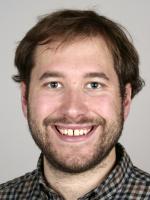My current post at the Univeristy of Cambridge is focused on adding the
Common Representitive Intermediates (CRI) chemical mechanism to the
United Kingdom Chemistry and Aerosol (UKCA) component of the Met Office Unified Model. Using CRI will be a significant increase in complexity as compared to the existing mechanisms in UKCA, but will offer substantial benefits in more realistic simulation of VOC degredation, tropospheric ozone formation and provide the framework for more explicit secondary aerosol formation. The long-term goal is to use the UKCA with CRI chemistry to run global chemistry-climate simulations which in turn drive regional simulations using the
Weather Research and Forecasting model with Chemistry (WRF-Chem), enabling high-resolution simulations over a region of interest with consistency in chemical mechanism and emissions used across scales.
Research Interests
My interests lie in using and developing coupled chemistry/climate models to investigate the impacts of short-lived pollutants in the troposphere on air quality, human health and climate. I have particular interest in aerosol evolution and properties: how these are driven by emission sources and secondary formation from gas-phase chemistry, how they feedback on regional meteorology and climate through radiative and cloud interactions, and how they further impact air quality and public health.
I did my PhD at the University of Manchester with
Prof. Gordon McFiggans between 2010-2014. I worked on using and developing the
Weather Research and Forecasting model with Chemistry (WRF-Chem), and evaluating it against observational data taken from the FAAM BAE-146 research aircraft, as part of two different research projects. The first (RONOCO) investigated the impact of nighttime nitrate chemistry over the UK, where I helped implement and test the
CRI chemical mechanism and an N2O5 heterogeneous chemistry parameterisation in WRF-Chem. The second campaign studied aerosol processes resulting from biomass burning emissions in Amazonia, working in collaboration with Brazilian researchers to use and improve a fire emissions product, and evaluate model output against in-situ flight measurements.
Following my PhD, I worked as a postdoctoral research fellow in the Atmospheric Chemistry, Observations and Modeling Laboratory at the
National Center for Atmospheric Research in Boulder, Colorado with
Christine Wiedinmyer. Here, I continued to use WRF-Chem to investigate the impact of particulate emissions from residential solid fuel combustion, a leading source of household and ambient pollution in low-middle income countries, on air quality and health in China.

